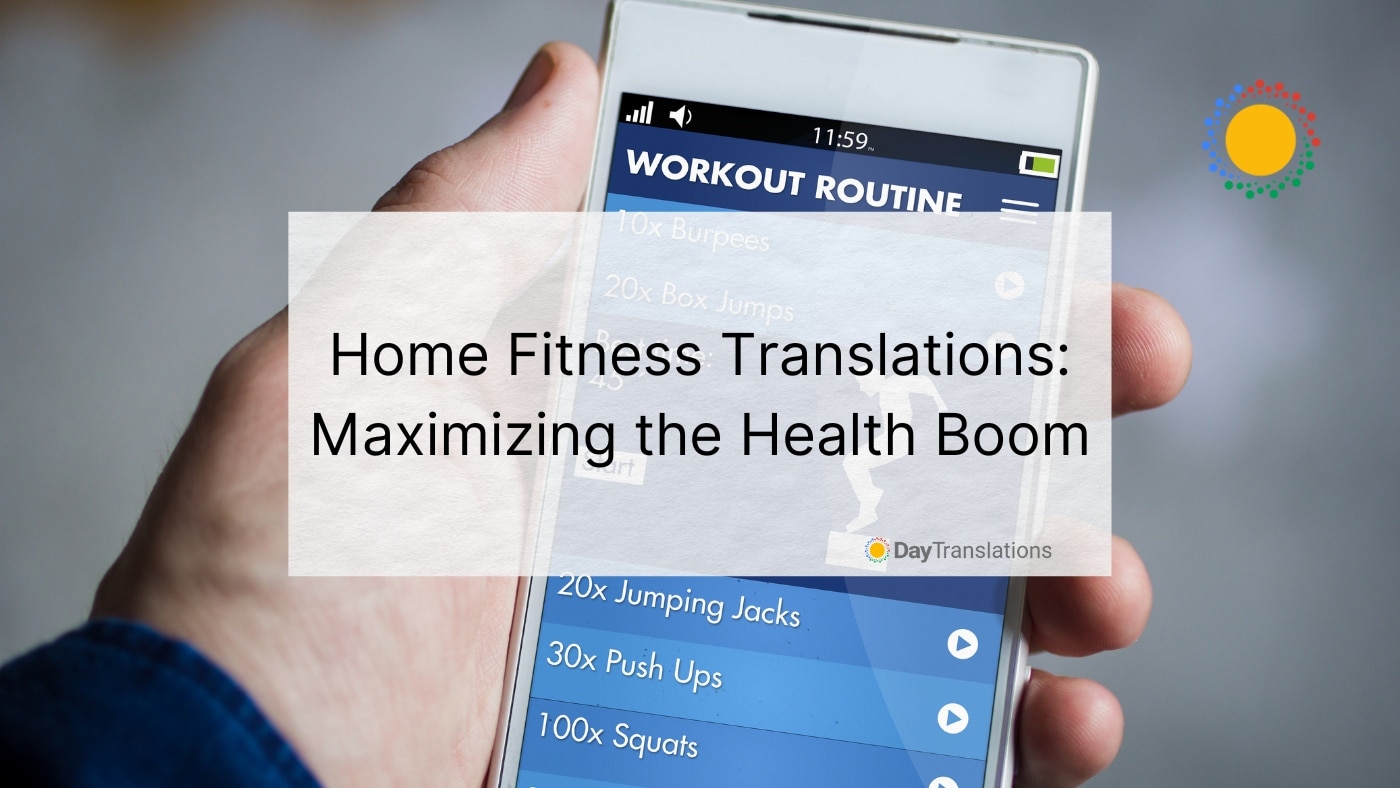During the worst stages of the COVID-19 pandemic, many of us were confined to long days at home due to continual restrictions and social distancing policies. And during times like these, motivation can be lacking. But data collected in mid-2020 suggests that many people across the globe became their own personal trainers during the pandemic. And much of this is primarily thanks to home fitness translations!
Over the last two years, there has been a massive spike in home exercise equipment sales. You can find everything from Yoga to high-intensity workout classes online via video conferencing services like Zoom. Essentially, home fitness is having its moment.
The Need for Home Fitness Translations
Many international fitness brands started offering virtual training programs online. These services peaked when the pandemic reshuffled the way we live and do business. But since the pandemic affected everyone around the globe, simply offering these training programs in one language would never suffice. Do you have any idea how many times the word fitness was translated during the first half of 2020? Too many times to keep track of!
The growing demand for home fitness and supporting languages for remote programs stemmed from people that regularly visited gyms and leisure facilities. Even when lockdown measures started being relaxed during the second half of 2020, many people chose to keep working out at home, even if they had the option to go back to the gym.
In an effort to react to ongoing restrictions, many brands with e-commerce sites provided fitness fanatics with everything they could need to reach their fitness goals at home. From a home-based fitness test to health scans and risk assessments, people were doing everything from the comfort of their own homes.
The app Freeletics saw an increase of 50% more activity during March and June in 2020. A cycling and running trapping app called Strava gained an average of 2 million new members every month during 2020! Given the surge in home fitness trends, it’s an opportune time for companies to create a fitness app to cater to this growing demand.
And how did sports and leisure facilities diversify during this time? They took to using technology and language service providers to help them tap into a market where the proverbial waters had been largely uncharted. Instead of in-person training sessions, they offered classes virtually.
How Localization Reaches More Markets
The fitness brand Peloton is a great example of how localization can help fitness brands maximize their audience engagement, even during an era of social distancing and lockdown restrictions.
Simple things like translating product labels and converting prices to local currencies are just the tip of the localization iceberg. If you’re looking to capture a larger global audience the way the Peloton community has, localization isn’t optional; it’s essential. And it’s the key to becoming a leading global brand.
Professional Health & Fitness Translation Services
At Day Translation, we’ve helped many fitness and leisure companies promote their brand. Not just on a local level, but internationally too, all thanks to expert translation services. During uncertain times like these, the best action brands can take is to plan ahead. The need to ensure that they’re prepared for when the world returns to normal is vital.
But with the spiking levels of continued interest in at-home fitness, fitness brands have a splendid opportunity to reach out to their audiences. It might be something as small as having your promotional materials translated. Or a considerable task like localizing your entire brand for a new location. But regardless of what you need to tap into this opportunity, our services are designed to enhance your brand’s appeal.
To find out more about our award-winning services and how we’ll help your fitness brand thrive, get in touch with the Day Translations team today. Our Sport, leisure, and fitness translation services help brands reach out to a global audience. And in the same way, we’ll help you transcend the linguistic and cultural barrier.














Sorry, the comment form is closed at this time.